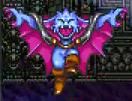Main » Forums
| Site Announcements |
|---|
[Continue] |
| It is currently April 18th, 2025, 3:20 pm |
|
| View unanswered posts | View active topics | |
|
All times are UTC - 5 hours [ DST ] |
 
|
Page 1 of 2 |
[ 40 posts ] | Go to page 1, 2 Next |
|
| Author | Message | |||
|---|---|---|---|---|
| Ixzion |
|
|||
 Site Admin
Site AdminRainbow Crash
Level 89
Joined: May 4th, 2005, 7:57 pm Posts: 10448 Location: VA, mofo |
|
|||
| Top | |
|||
| ErikaFuzzbottom |
|
|||
 Rank 11: Sexy Black Mage
Rank 11: Sexy Black MageSpotted Skunk/Dragon
Level 158
Joined: May 18th, 2005, 4:18 pm Posts: 7289 Location: <- That Way -> |
|
|||
| Top | |
|||
| ShadowFox1001 |
|
|||
 Rank 9: Mischievous Thief
Rank 9: Mischievous ThiefKing of Heroes
Level 53
Joined: May 8th, 2005, 1:16 pm Posts: 4894 |
|
|||
| Top | |
|||
| Guarionex |
|
|||
 Rank 7: Learned Black Mage
Rank 7: Learned Black MageElf lover
Level 37
Joined: August 3rd, 2006, 5:02 pm Posts: 2894 Location: Isla del Encanto |
|
|||
| Top | |
|||
| ErikaFuzzbottom |
|
||
 Rank 11: Sexy Black Mage
Rank 11: Sexy Black MageSpotted Skunk/Dragon
Level 158
Joined: May 18th, 2005, 4:18 pm Posts: 7289 Location: <- That Way -> |
|||
| Top | |
||
| ShadowFox1001 |
|
|||
 Rank 9: Mischievous Thief
Rank 9: Mischievous ThiefKing of Heroes
Level 53
Joined: May 8th, 2005, 1:16 pm Posts: 4894 |
|
|||
| Top | |
|||
| myoky |
|
|||
 Rank 8: Adept Fighter
Rank 8: Adept Fighter
Level 73
Joined: May 19th, 2006, 8:42 pm Posts: 3632 Location: Ohio |
|
|||
| Top | |
|||
| ShadowFox1001 |
|
|||
 Rank 9: Mischievous Thief
Rank 9: Mischievous ThiefKing of Heroes
Level 53
Joined: May 8th, 2005, 1:16 pm Posts: 4894 |
|
|||
| Top | |
|||
| ErikaFuzzbottom |
|
||
 Rank 11: Sexy Black Mage
Rank 11: Sexy Black MageSpotted Skunk/Dragon
Level 158
Joined: May 18th, 2005, 4:18 pm Posts: 7289 Location: <- That Way -> |
|||
| Top | |
||
| ShadowFox1001 |
|
|||
 Rank 9: Mischievous Thief
Rank 9: Mischievous ThiefKing of Heroes
Level 53
Joined: May 8th, 2005, 1:16 pm Posts: 4894 |
|
|||
| Top | |
|||
| Lantis |
|
|||
 Site Admin
Site Admin"The worst pokemon."
Level 97
Joined: January 16th, 2006, 1:09 pm Posts: 15377 Location: 33.2076° N, 92.6663° W |
|
|||
| Top | |
|||
| ErikaFuzzbottom |
|
||
 Rank 11: Sexy Black Mage
Rank 11: Sexy Black MageSpotted Skunk/Dragon
Level 158
Joined: May 18th, 2005, 4:18 pm Posts: 7289 Location: <- That Way -> |
|||
| Top | |
||
| ShadowFox1001 |
|
|||
 Rank 9: Mischievous Thief
Rank 9: Mischievous ThiefKing of Heroes
Level 53
Joined: May 8th, 2005, 1:16 pm Posts: 4894 |
|
|||
| Top | |
|||
| ShadowFox1001 |
|
|||
 Rank 9: Mischievous Thief
Rank 9: Mischievous ThiefKing of Heroes
Level 53
Joined: May 8th, 2005, 1:16 pm Posts: 4894 |
|
|||
| Top | |
|||
| Fayorei |
|
|||
 Rank 6: Potent White Mage
Rank 6: Potent White MageWe didn't play twister mister
Level 50
Joined: May 7th, 2005, 11:24 pm Posts: 2721 |
|
|||
| Top | |
|||
| ShadowFox1001 |
|
|||
 Rank 9: Mischievous Thief
Rank 9: Mischievous ThiefKing of Heroes
Level 53
Joined: May 8th, 2005, 1:16 pm Posts: 4894 |
|
|||
| Top | |
|||
| Fayorei |
|
|||
 Rank 6: Potent White Mage
Rank 6: Potent White MageWe didn't play twister mister
Level 50
Joined: May 7th, 2005, 11:24 pm Posts: 2721 |
|
|||
| Top | |
|||
| Fayorei |
|
|||
 Rank 6: Potent White Mage
Rank 6: Potent White MageWe didn't play twister mister
Level 50
Joined: May 7th, 2005, 11:24 pm Posts: 2721 |
|
|||
| Top | |
|||
| ErikaFuzzbottom |
|
||
 Rank 11: Sexy Black Mage
Rank 11: Sexy Black MageSpotted Skunk/Dragon
Level 158
Joined: May 18th, 2005, 4:18 pm Posts: 7289 Location: <- That Way -> |
|||
| Top | |
||
| Fayorei |
|
|||
 Rank 6: Potent White Mage
Rank 6: Potent White MageWe didn't play twister mister
Level 50
Joined: May 7th, 2005, 11:24 pm Posts: 2721 |
|
|||
| Top | |
|||
 
|
Page 1 of 2 |
[ 40 posts ] | Go to page 1, 2 Next |
|
All times are UTC - 5 hours [ DST ] |
Who is online |
Users browsing this forum: No registered users and 2 guests |
| You cannot post new topics in this forum You cannot reply to topics in this forum You cannot edit your posts in this forum You cannot delete your posts in this forum You cannot post attachments in this forum |


















